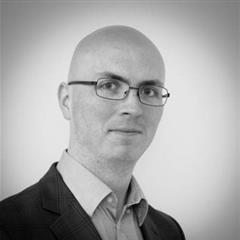Security is paramount when it comes to selecting an enterprise CMS. As cyberattacks become increasingly sophisticated, so must our defenses. Therefore, we have crafted this comprehensive overview of Drupal’s security features to simplify the decision-making process for you.
Thanks to its robust security and reliability, Drupal CMS is often chosen by organizations with stringent security requirements. Some of the most well-known corporations, institutions, and governments in the world, including Panasonic, UNESCO, Pfizer, the University of Toronto, and the City of London, use Drupal.
However, like any CMS, Drupal can become a target for hackers and malicious actors seeking to exploit security vulnerabilities. The good news is that Drupal is equipped with a robust set of features that can help you navigate the ever-evolving landscape of cyber threats and protect your digital assets.
But before we get into these security features, we need to understand the cybersecurity risks we face today.
Potential security risks
When building your Drupal site, you need to take into account the following potential security risks.
Cross-site scripting (XSS)
Cross-site scripting attacks involve the injection of harmful scripts into websites that are otherwise considered safe. These attacks happen when a malicious individual exploits a web application to deliver harmful code, typically as a client-side script, to another user. The vulnerabilities that enable these attacks are common and arise in situations where a web application incorporates user input into its output without properly checking or sanitizing it.
In an XSS scenario, the attacker dispatches a harmful script to an unwary user. The recipient’s browser lacks the capability to identify the untrustworthiness of the script and consequently executes it. Assuming the script is from a reliable source, the browser may then unwittingly expose cookies, session tokens, or other confidential data associated with the site to the script. Furthermore, such scripts have the potential to alter the HTML page content.
SQL injection (SQLI)
An SQL injection attack consists in inserting or “injecting” an SQL query into the client’s input data sent to the application. If successful, an SQL injection exploit can have various consequences, including:
- reading sensitive data from the database,
- modifying database data (Insert/Update/Delete operations),
- executing administrative actions on the database, such as shutting down the database management system (DBMS),
- retrieving the contents of a specific file present on the DBMS file system,
- in some cases, issuing commands to the underlying operating system.
SQL injection attacks belong to the category of injection attacks, where SQL commands are inserted into data-plane inputs to manipulate the execution of predefined SQL commands.
Cross-site request forgery (CSRF)
Cross-site request forgery is a type of attack that compels an authenticated end user to unintentionally carry out actions within a web application. This manipulation often involves exploiting social engineering tactics, such as sending a deceptive link via email or chat, to deceive users into executing actions dictated by the attacker. In the case of a regular user, a successful CSRF attack can compel them to initiate requests that alter their account state, such as transferring funds or modifying their email address. However, if the victim has an administrative account, CSRF can pose a severe threat, potentially compromising the entire web application.
Authentication bypass
Authentication and access controls are vital for web application and system security. Weak or inconsistent controls can create vulnerability, allowing threat actors to exploit an authentication bypass. In this type of vulnerability, attackers can circumvent an application’s authentication process, gaining unauthorized access. For instance, an attacker may use another user’s credentials, and if multi-factor authentication is not in place, they can access the application. Attackers can exploit these weaknesses to gain unauthorized access to systems, steal session cookies, or manipulate system settings.
Read more on Web development:
15 reasons why Drupal is a leading CMS choice in 2024
Top web development frameworks you should know about in 2024
A web application security checklist for every stage of development
React best practices for web development
Angular vs. React—which one to choose
Micro frontends: pros and cons
Blazor vs. React—key differences, pros and cons, and use cases
What is Blazor, and why should you use it?
Blazor vs. Angular: which is better for web development in 2023
Remote code execution (RCE)
Remote code execution is when an attacker runs malicious code on a target’s system or network, potentially deploying additional malware or stealing sensitive data. RCE typically exploits security vulnerabilities in web applications and network infrastructure, including injection vulnerabilities like SQL injection, insecure deserialization, out-of-bounds writes, and file management flaws. Attackers can use RCE to achieve goals such as deploying malware, launching denial-of-service attacks (DDoS), or accessing sensitive information.
Distributed denial-of-service attacks
A distributed denial-of-service (DDoS) attack is a malicious tactic aimed at disrupting the regular flow of traffic to a specific server, service, or network. It achieves its effectiveness by utilizing networks of infected Internet-connected devices, including computers and IoT devices, controlled remotely by the attacker. These compromised devices, known as bots or zombies, form a botnet. The attacker issues remote instructions to each bot, directing them to send requests to the target’s IP address. This flood of requests can overwhelm the victim’s server or network, causing a denial of service to normal traffic. Distinguishing attack traffic from legitimate traffic can be challenging because bots are legitimate Internet devices, albeit under the control of an attacker.
Zero-day exploits
A zero-day exploit is a cyberattack method that capitalizes on a hidden or unpatched security vulnerability in computer software, hardware, or firmware. The term “zero day” signifies that the vendor has no time to address the flaw, as cybercriminals can immediately exploit it to infiltrate susceptible systems.
Drupal security features
What mechanisms are at your disposal to make your Drupal website secure? Let us take a closer look.
#1 Role-based access control (RBAC)
Drupal’s RBAC system allows administrators to create specific roles for site users, each with its own set of permissions. This granularity extends to virtually every aspect of the site, from viewing content and using certain features to administrative functions. Such detailed control ensures that users can only access the information and functionalities necessary for their role, significantly enhancing site security by minimizing the risk of unauthorized access or content manipulation.
#2 Database encryption
Drupal supports strong encryption mechanisms for safeguarding sensitive data stored in its database, providing essential protection for personal and confidential information. Administrators can choose to encrypt the entire database or specific fields, depending on their security needs and compliance requirements. This feature is particularly crucial for sites handling financial transactions, personal user data, or any information that, if exposed, could lead to privacy breaches or legal complications.
#3 Built-in CSRF protection
Drupal combats cross-site request forgery (CSRF) attacks through an integrated token system within its Form API. Each form submission requires a unique, session-based token, verifying the legitimacy of user actions. This built-in mechanism prevents attackers from executing unauthorized commands on behalf of authenticated users, thereby safeguarding the system against malicious external manipulations. It is an essential security feature for maintaining the integrity of user transactions and data submissions on any Drupal site.
Also, Security Kit module, among other features, offers protection against cross-site scripting (XSS) attacks.
#4 Brute force detection
To protect against brute-force login attempts, Drupal employs a detection system that monitors and blocks excessive failed login attempts. If the system detects an excessive number of failed attempts within a short period, it temporarily blocks further attempts from that IP address. In addition to monitoring IP addresses, Drupal also tracks failed login attempts for individual user accounts. After a predefined threshold of failed attempts is reached, Drupal temporarily blocks further attempts regardless of the IP address from which the attempts are made. This feature is crucial for protecting user accounts from unauthorized access.
#5 Form and input validation
Drupal’s Form API ensures robust validation and sanitization of all user inputs, a critical defense against SQL Injection, XSS, and other injection attacks. By rigorously checking data for expected types, patterns, and lengths, Drupal prevents malicious data from compromising the site’s integrity or security. This validation process is automated for standard forms and fields, but developers can also customize validation rules for specific needs, ensuring comprehensive protection across diverse use cases.
#6 Secure configuration options
Drupal comes with secure default configurations that guide administrators towards best practices in site setup and management. These configurations cover a wide range of security aspects, from file system permissions to user authentication processes and error reporting. Administrators are encouraged to review and adjust these settings to align with their specific security policies and requirements, ensuring that the Drupal site remains resilient against potential vulnerabilities and exploits.
#7 Security advisories
The Drupal Security Team plays a pivotal role in the platform’s security ecosystem by regularly issuing updates and advisories. They are also responsible for:
- resolving reported security incidents,
- providing support for module creators in resolving security incidents,
- creating documentation on how to write secure code and secure Drupal-based websites.
Furthermore, in partnership with the Drupal Association, the Drupal security team manages Drupal Steward, an affordable web application firewall (WAF) aimed at bridging the gap between the release of a security patch and the completion of a site update with the new patch.
#8 Automatic updates (Drupal 10)
The Drupal 10 Automatic Updates module, which was highly anticipated by the community, simplifies the update process, allowing for easy application of patch-level updates through a user-friendly interface without needing command line knowledge. It is particularly beneficial for security updates, ensuring sites remain secure despite the common delays in manual updates. However, it does not yet support unattended updates or version control integration and has limitations with multi-site setups and production environments with read-only file systems. Work is ongoing to expand its capabilities, including updating contributed modules.
#9 APIs for secure code writing
Drupal provides developers with a suite of APIs designed to facilitate secure coding practices. These include the Database Abstraction Layer, which prevents SQL injection through parameterized queries, and functions for safely handling user inputs and outputs to avoid XSS attacks. By leveraging these APIs, developers can write custom functionalities with confidence, knowing that the underlying code adheres to Drupal’s strict security standards and best practices.
#10 Session management and secure cookies
Drupal’s session management system is designed with security in mind, featuring secure session cookies and customizable session lifetimes. This ensures that user sessions are not only uniquely identifiable but also protected against common exploits like session hijacking and fixation. Administrators have the flexibility to enforce SSL usage for session cookies, further encrypting and securing session data as it travels between the user’s browser and the server.
#11 Reporting and logging
Drupal’s logging system provides an invaluable resource for monitoring site health and security. It records a wide array of system events, user activities, and potential security anomalies, offering administrators a comprehensive overview of site operations. This detailed logging is essential for identifying suspicious behavior, auditing user actions, and conducting post-incident analyses, making it an indispensable tool for maintaining a secure and transparent Drupal environment.
#12 Two-factor authentication (2FA)
The Two-Factor Authentication module adds an additional layer of security to Drupal sites by requiring users to provide two distinct forms of identification before gaining access. This feature is particularly important for administrative accounts or sites with high-security requirements, as it greatly reduces the risk of unauthorized access, even if a password is compromised.
#13 Content security policy (CSP)
A content security policy is a web security standard introduced to prevent cross-site scripting (XSS), clickjacking, and other code injection attacks resulting from the execution of malicious content in the trusted web page context.
In the context of Drupal, implementing a content security policy involves specifying a CSP policy that defines what resources (such as scripts, styles, images, etc.) can be loaded and executed on your Drupal site. This policy is communicated from the web server to the browser via an HTTP header (Content-Security-Policy). When a browser receives this header, it enforces the restrictions specified in the CSP policy, blocking any resources or scripts that are not explicitly allowed.
To implement a CSP in Drupal, you can use the “Content Security Policy” module, which allows administrators to configure their CSP policy through the Drupal admin interface, providing a more user-friendly way to set and modify the policy. Alternatively, you can configure it manually by adding the Content-Security-Policy header to the web server configuration (such as Apache’s .htaccess file or Nginx’s server block configuration). This approach requires a good understanding of CSP directives and the security needs of your site.
#14 Protection against bots
The Honeypot Drupal module offers protection against bots. It employs both honeypot and timestamp techniques to thwart spam bots on your Drupal site without inconveniencing users like CAPTCHAs do. It offers flexibility by allowing activation for all forms or specific ones, such as user registration, password reset, webforms, contact forms, node forms, and comment forms.
#15 Other security modules
Beyond the core features, there is a wide range of contributed modules specifically designed to enhance Drupal’s security, for example:
- Login Security: This module allows site administrators to add restrictions to the login flows on a Drupal site. It can limit the number of invalid authentication attempts before blocking an account and deny access from specific IP addresses.
- CAPTCHA: CAPTCHA is a challenge-response test often used to block form submissions by spambots. The module provides CAPTCHA features to user-facing web forms on a Drupal site.
- Password Complexity Modules: Some modules (e.g., Password Strength, Password Policy, Better Passwords) extend Drupal’s security by adding password complexity checks to ensure strong passwords are used.
- Security Review Module: This module performs a review of your Drupal site’s security and provides recommendations for improving security configurations.
- Content Access Control: Modules like Content Access allow fine-grained control over who can access specific content on your Drupal site, enhancing content security.
Takeaways
As you can see, Drupal offers numerous features, both in the core and as modules to install, that will help you ensure your Drupal website is secure. Additionally, the Drupal security team is always eager to help you make your Drupal site secure. All this makes Drupal a good choice for enterprise CMS.












